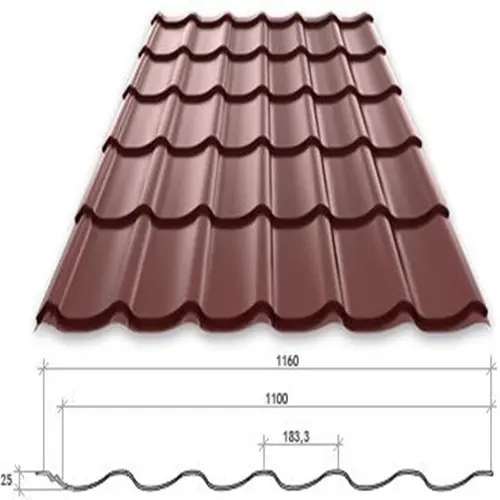Roofing Sheets Machine Revolutionizing Construction
In the world of construction, the efficiency and durability of materials can considerably impact the outcome of any project. Roofing sheets, integral to both residential and commercial buildings, have evolved significantly over the years. At the forefront of this evolution is the roofing sheets machine, a revolutionary piece of equipment that is changing how roofing materials are produced.
What is a Roofing Sheets Machine?
A roofing sheets machine is a specialized piece of machinery designed to manufacture roofing sheets from various materials such as metal, plastic, or composite materials. These machines operate through advanced processes such as roll forming, cutting, and embossing. The main types of roofing sheets produced include corrugated sheets, tile sheets, and flat sheets, which are all crucial in providing protection and aesthetics to structures.
The Technology Behind Roofing Sheets Machines
The roofing sheets machine employs sophisticated technology to ensure precision and high-quality output. Most machines feature a continuous production line, which allows for the seamless transition from raw material to finished product. The process typically begins with a coil of metal or plastic being fed into the machine. The coil is then unrolled and passed through a series of rollers that shape it into the desired profile for roofing sheets.
Adjustable settings enable operators to customize the width, shape, and thickness of the sheets being produced. Advanced computerized controls facilitate exact measurements, reducing waste and ensuring consistency in production. Additionally, many modern machines come equipped with automatic cutting systems which enhance efficiency by calculating and executing cuts according to predefined specifications.
Benefits of Using Roofing Sheets Machines
1. Cost-Effectiveness The automation of roofing sheet production significantly reduces labor costs and minimizes human error. This efficiency translates into lower production costs, making it more feasible for manufacturers to produce high-quality materials at competitive prices.
roofing sheets machine
2. Durability and Quality Control Machines are designed to maintain a high level of quality control. They can consistently produce roofing sheets that meet specific standards and specifications, resulting in products that are more durable and reliable compared to those made by hand.
3. Versatility Roofing sheets machines can typically produce a wide array of sheet types, accommodating various design preferences and functional needs. This versatility allows manufacturers to cater to different markets, whether that involves standard corrugated sheets or custom designs for unique architectural projects.
4. Environmental Sustainability Advanced roofing sheets machines can also contribute to sustainability efforts. Many manufacturers are now utilizing recycled materials, and machines are capable of efficiently processing these materials without compromising quality. Furthermore, the reduction in waste through precise controls aids in lessening the environmental impact of construction activities.
The Future of Roofing Sheets Machines
As technology continues to advance, roofing sheets machines are likely to become even more sophisticated. Innovations in materials, such as the use of lightweight composites and eco-friendly substances, will influence the design and functionality of these machines. Moreover, integrating smart technology, such as IoT (Internet of Things) capabilities, will allow for remote monitoring and maintenance, improving operational efficiency.
The construction industry is ever-evolving, and the roofing sheets machine stands central to this transformation. By enhancing efficiency, quality, and sustainability, these machines are not only shaping the roofs above our heads but also the future of construction practices on a broader scale.
Conclusion
In conclusion, roofing sheets machines are a cornerstone of modern construction technology. With their ability to produce high-quality, durable, and diverse roofing materials, they are instrumental in meeting the increasing demands of the construction industry. As we look forward to future developments, these machines will undoubtedly continue to play an essential role in revolutionizing how we build and shelter our lives.







